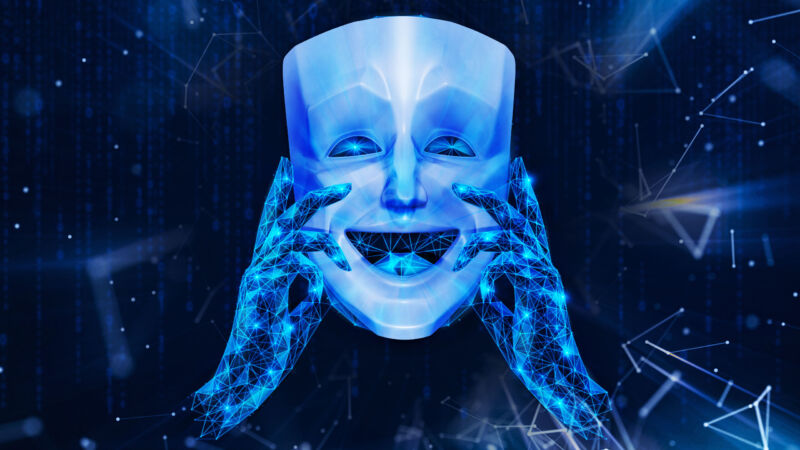
Enlarge / Oh you silly, silly human. Why are you so silly, you silly human? (credit: Aurich Lawson | Getty Images)
At this point, anyone with even a passing interest in AI is very familiar with the process of typing out messages to a chatbot and getting back long streams of text in response. Today’s announcement of ChatGPT-4o—which lets users converse with a chatbot using real-time audio and video—might seem like a mere lateral evolution of that basic interaction model.
After looking through over a dozen video demos OpenAI posted alongside today’s announcement, though, I think we’re on the verge of something more like a sea change in how we think of and work with large language models. While we don’t yet have access to ChatGPT-4o’s audio-visual features ourselves, the important non-verbal cues on display here—both from GPT-4o and from the users—make the chatbot instantly feel much more human. And I’m not sure the average user is fully ready for how they might feel about that.
It thinks it’s people
Take this video, where a newly expectant father looks to ChatGPT-4o for an opinion on a dad joke (“What do you call a giant pile of kittens? A meow-ntain!”). The old ChatGPT4 could easily type out the same responses of “Congrats on the upcoming addition to your family!” and “That’s perfectly hilarious. Definitely a top-tier dad joke.” But there’s definitely much more impact to hearing GPT-4o give that same information in the video, complete with the gentle laughter and rising and falling vocal intonations of a lifelong friend.




















+ There are no comments
Add yours